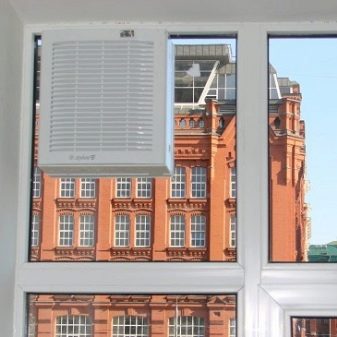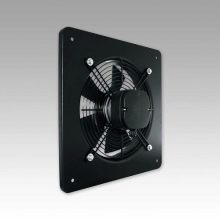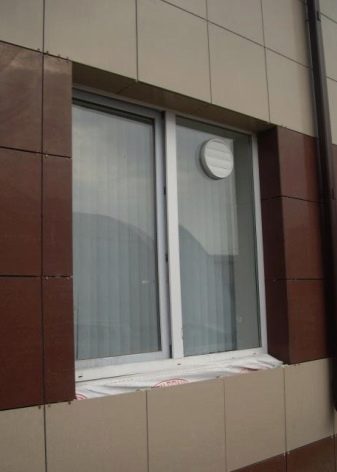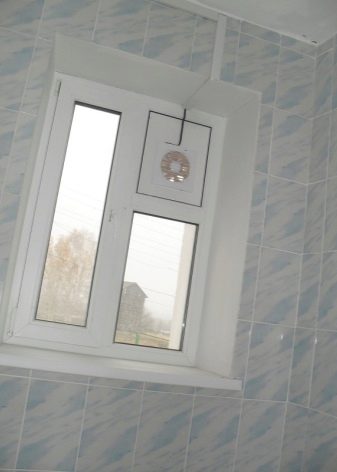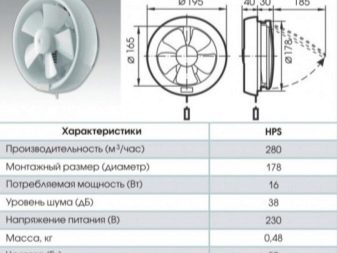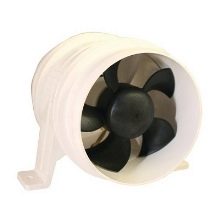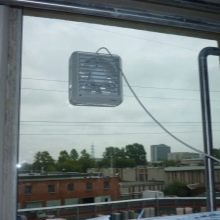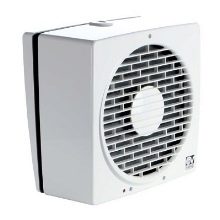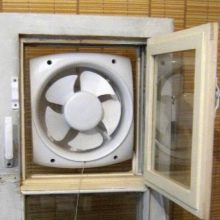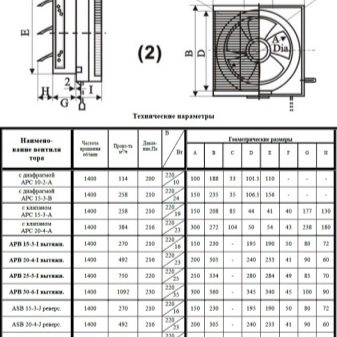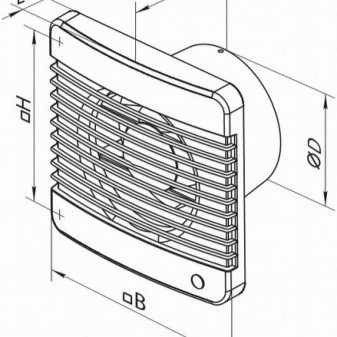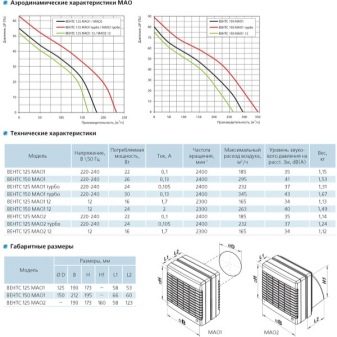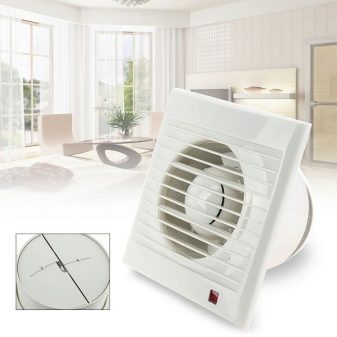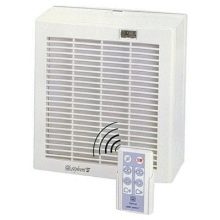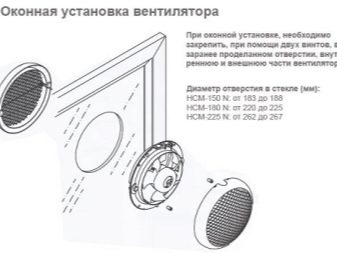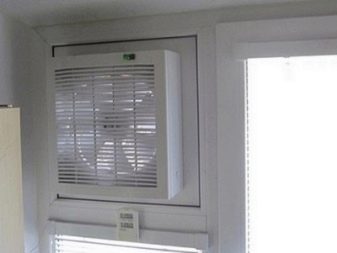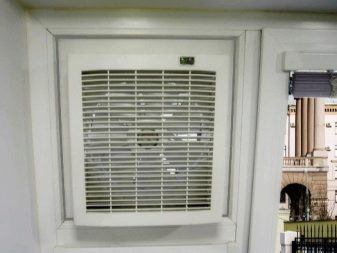What window fans are needed for: types and purpose
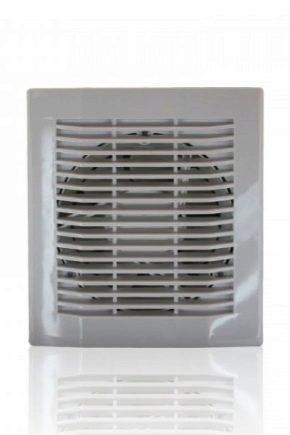
The window fan is a small and functional device used to provide air exchange in the room. Let us consider in more detail the features of such products, as well as the nuances of their installation.
Special features
The window fan is a compact device that is lightweight. It is fixed in the window opening and serves as a means of improving air circulation. Depending on the power and other technical characteristics, with the help of this device it is possible to organize both full ventilation of the whole room and the ventilation system in separate stagnant zones.
The power of such fans is sufficient for airing rooms in an apartment or house, small offices, commercial premises. For ventilation of production facilities, they are usually not suitable, there are used more powerful intake systems.
The fan can be mounted on top of the window or replace its part, due to the low weight of the structure. As a rule, it is closed by blinds or curtains, which are raised (moved apart) only during operation of the device. The rest of the time it is usually imperceptible.
The presence of the fan allows you to quickly refresh the room without having to open the window. This protects people from cold or hot (in the summer heat) air, street noise.
As with the ventilation by opening the window, the fan ensures the penetration of fresh air into the room, but at the same time the heat loss is reduced by 50%. The use of the fan is more hygienic compared to opening the windows - the owners are protected from dust, debris, and insects from entering the room.
The fan runs almost silently, which is also an advantage. Finally, the device is versatile and suitable for installation on metal, plastic and wooden windows.
The service life of such products is 10-15 years. The variety of types and the possibility of choosing a fan of any size and power greatly expands the scope of application of devices and causes their growing demand.
Among the advantages stand out:
- providing air exchange in the room, replacing the bulky ventilation system;
- compact size, inconspicuous on the window;
- economical power consumption;
- the ability to adjust the work;
- high efficiency with the correct calculation of the power of the device in accordance with the area of the room;
- affordability in comparison with the equipment of an effective ventilation system or the use of air conditioners;
- the ability to operate in all weather conditions (in contrast, for example, from split-systems, the operation of which in the winter cold is unacceptable);
- protection from dust entering the premises;
- ease of installation (even a non-professional can handle it) and operation.
Among the minuses are usually noted:
- the need to change the design of the window, which may adversely affect the strength of the profiles and geometry of the glass;
- operation noise (albeit small);
- the inability to completely avoid heat loss through the fan in the absence of additional insulation;
- risk of damage and leakage if the installation rules are not observed or glass is used too thin.
Specifications
The power of the domestic fan installed on the window is 15-20 watts. These indicators are sufficient for high-quality air exchange and air purification. At the same time, low power provides a lower noise figure when the device is operating.
The speed of the blades of such units on average equal to 3,000 revolutions per minute. The body of the product is made of durable types of plastic that are resistant to weathering, the temperature difference outside the window and indoors. The temperature range of the fan is from -50 ° C to + 50 ° C.
To avoid heat loss allows the use of fans with blinds or cover. They are used when disconnecting the device's engine. To increase the thermal insulation properties of the blind strip, they are equipped with special rubber seals that prevent the formation of gaps.When lowering the cover, the fans turn off automatically.
Such devices do not have reverse thrust and are recommended for installation on the window or instead of it.
Kinds
It is customary to distinguish between axial and centrifugal fans for windows.
- The first received the most widespread due to its efficiency and ergonomics. The movement of air in such devices is carried out along the entire axis of the electric motor. The blades form a circle.
- Centrifugal the fans are more powerful, but they imply the presence of a massive case, which is installed indoors. The blades are arranged in a spiral, thereby capturing a larger amount of air.
- Industrial professional kitchens are equipped with diametrical fans, also called “squirrel cage”. They are an elongated cylindrical body, the walls of which are curved inside the blade. The latter capture the air, and the built-in rotor pushes it inside the room.
Depending on the design features and its functionality, there are several varieties of window fans.
Exhaust
Their purpose is to remove polluted air and various odors. This allows you to apply similar options in the toilets, kitchens, chemical laboratories, workshops. Fresh air is supplied through open windows or comes from adjacent ventilated rooms.
Intake
Such structures are located in residential and work areas, in which there is no need to remove polluted air. Their function is to provide fresh air. At the same time, due to the increased pressure created by the intake fan, the rate of exhaust of air through the ventilation ducts increases.
This type of fan is also used to cool the room. It can replace the air conditioner, if we are not talking about a situation where the temperature outside the window is too high. Then the fan will pump hot air, which is impractical.
Supply and exhaust
These are multifunctional systems that provide simultaneous exhaust of polluted and fresh air. Only a reversible fan equipped with an electric motor of suitable power can cope with this task.The function of the influx of fresh or exhaust polluted air is associated with one or another direction of movement of the blades. To determine the mode of operation of the device allow special indicators on its body.
Depending on the installation location, window fans differ and their type - fortochny. The latter are more compact in size. They are usually used in plastic glazing.
Separately it is necessary to allocate slotted window fans, mounted in the profile window.
They are equipped with a valve, due to which the functionality of the device remains unchanged regardless of atmospheric factors.
Thus, fans can have additional accessories. Among the most common:
- automatic or gravitational blinds or covers (prevent heat loss of the room);
- check valve, mounted at the outlet of the fan (designed for exhaust structures);
- a valve that allows you to adjust the amount of incoming air (for intake and intake-exhaust fans with a diaphragm);
- protective grids (prevent dust and dust from entering the device);
- automatic fan control system (includes control unit or remote control);
- decorative overlays.
How to choose?
The best option due to the versatility of operation is the supply and exhaust system. However, such a fan has a higher cost. If it is not possible to purchase it, then you can buy an exhaust counterpart for a bathroom and a kitchen or an intake system for a living room, office, bedroom, office. For rooms from which it is required to remove polluted air in large volumes, the option of installing a three-phase window fan, which is characterized by increased performance and power, is suitable.
When purchasing, it is important to take into account such product characteristics as power, performance and dimensions.
The highest performance indicators, as well as high efficiency, are demonstrated by an axial-type fan, which has the simplest design.
One more parameter to which it is worth paying attention - how many times air completely changes throughout an hour. If we are talking about the use of a fan in residential areas, then 2-6 times is enough. For bathrooms, this figure increases to 6-10 times per hour.The maximum rate is for devices mounted in the kitchen. Here the air must change completely within an hour at least 10-15 times. The more actively the room is operated and the more people there are, the more times the air must change.
The calculation of the required power of the structure is carried out taking into account the dimensions of the room and its purpose. For example, for air exchange in the kitchen with an area of 30 mkV, a fan with a capacity of at least 300 m3 per hour should be purchased This figure can be obtained by multiplying the area of the room by the required number of air changes.
The size of the device should correspond to the dimensions and strength of the window. The device should not obstruct it or prevent the penetration of sunlight. For home and office, you should choose devices whose noise figure during operation does not exceed 30 dB.
Otherwise, it will be extremely uncomfortable to be in the room.
If it is necessary to operate the device in high humidity conditions, special moisture-proof models should be chosen. If splashing of water or other liquids is possible on the fan, it is recommended to use splash protectors.
It is desirable that the reversing devices are equipped with anti-vibration gasket that prevents the spread of vibrations on the glass. For residents of central Russia, especially for those living in harsh climatic conditions, you should choose a device with a sealing rubber-louver or cover that will prevent heat loss in the cold.
When buying, you should give preference to products of well-known brands, making sure of the originality of the fans offered by the seller. The devices of such brands as “Domovent”, “Climate”, “Vents”, Fluger, Eleyus, Soler & Palau have proven themselves well.
Tips
When installing the device with your own hands, it is necessary to use special components in the joints of the structure. The task of the components is complete sealing and reliable fixation of the junction points. When installing it is also advisable to use soundproofing pads, which significantly increase the comfort of the fan.
Installation in most cases begins with the replacement of a standard glass unit with a more durable one. Next, a hole is made in the glass that exactly matches the size of the fan. Perforations for mounting the device are also performed. After that, the glass is framed by a frame and mounted in a window opening. Then you can install the fan according to the instructions.
If the unit is designed for PVC glass, then the device should be installed directly at the stage of its manufacture. In such cases, the fan is usually placed in the window.
Attempts to independently cut a hole for a fan in an already installed glass package end in a fiasco — depressurization of the structure occurs and its thermal insulation properties are lost.
You can watch the video review of one of the best window fan models - Elicent BUILT-IN (Italy), in the video a little lower.

